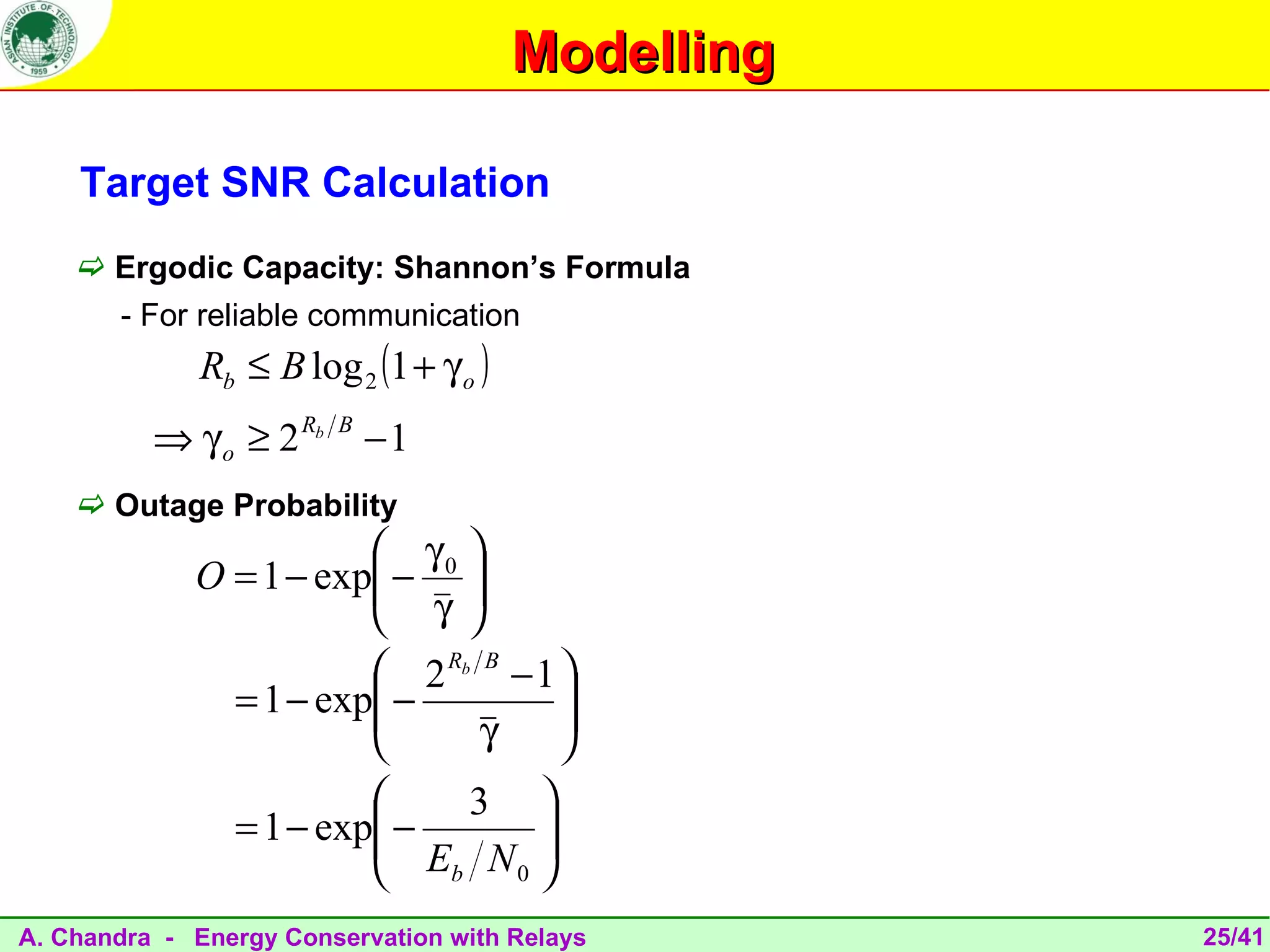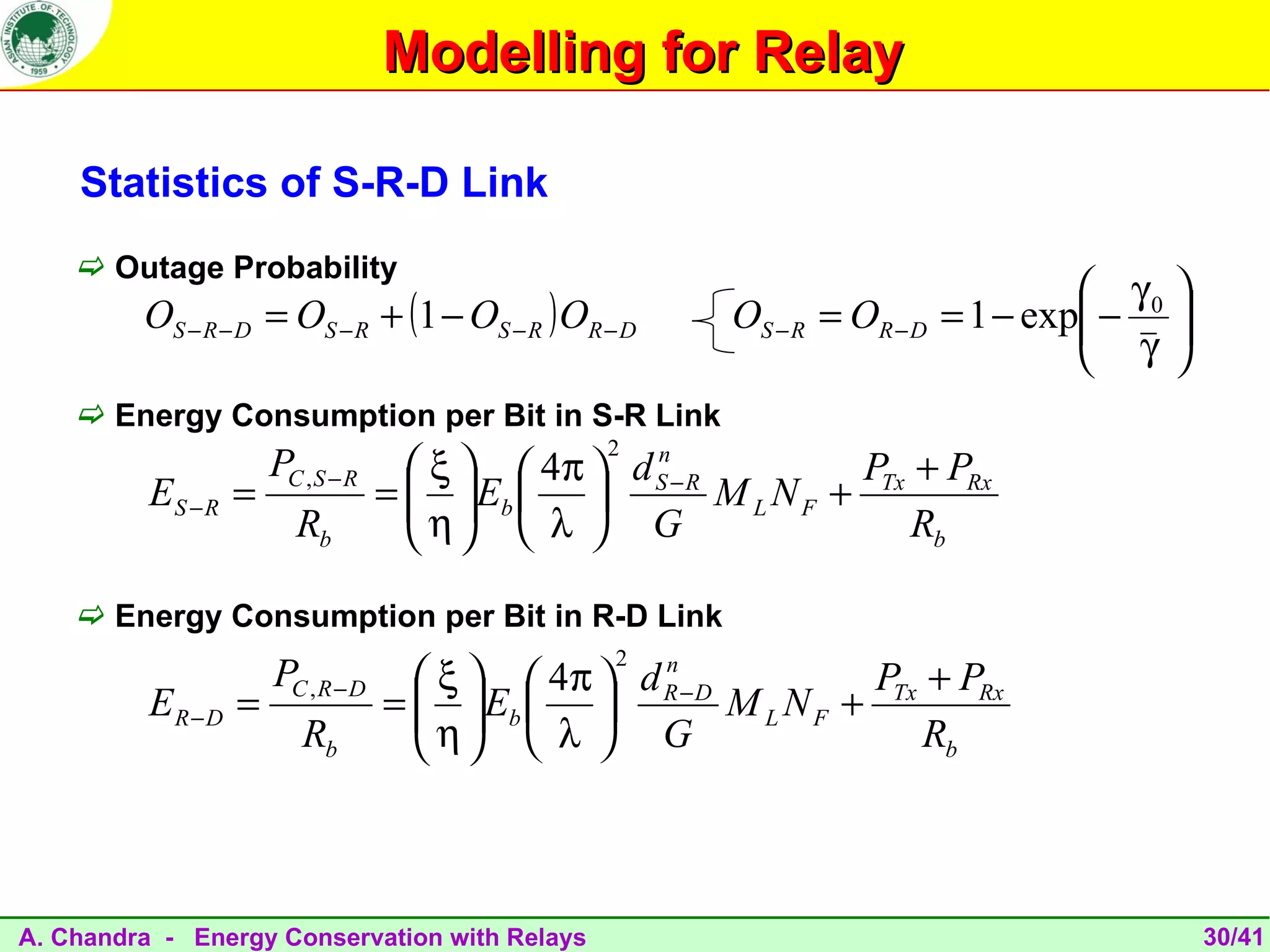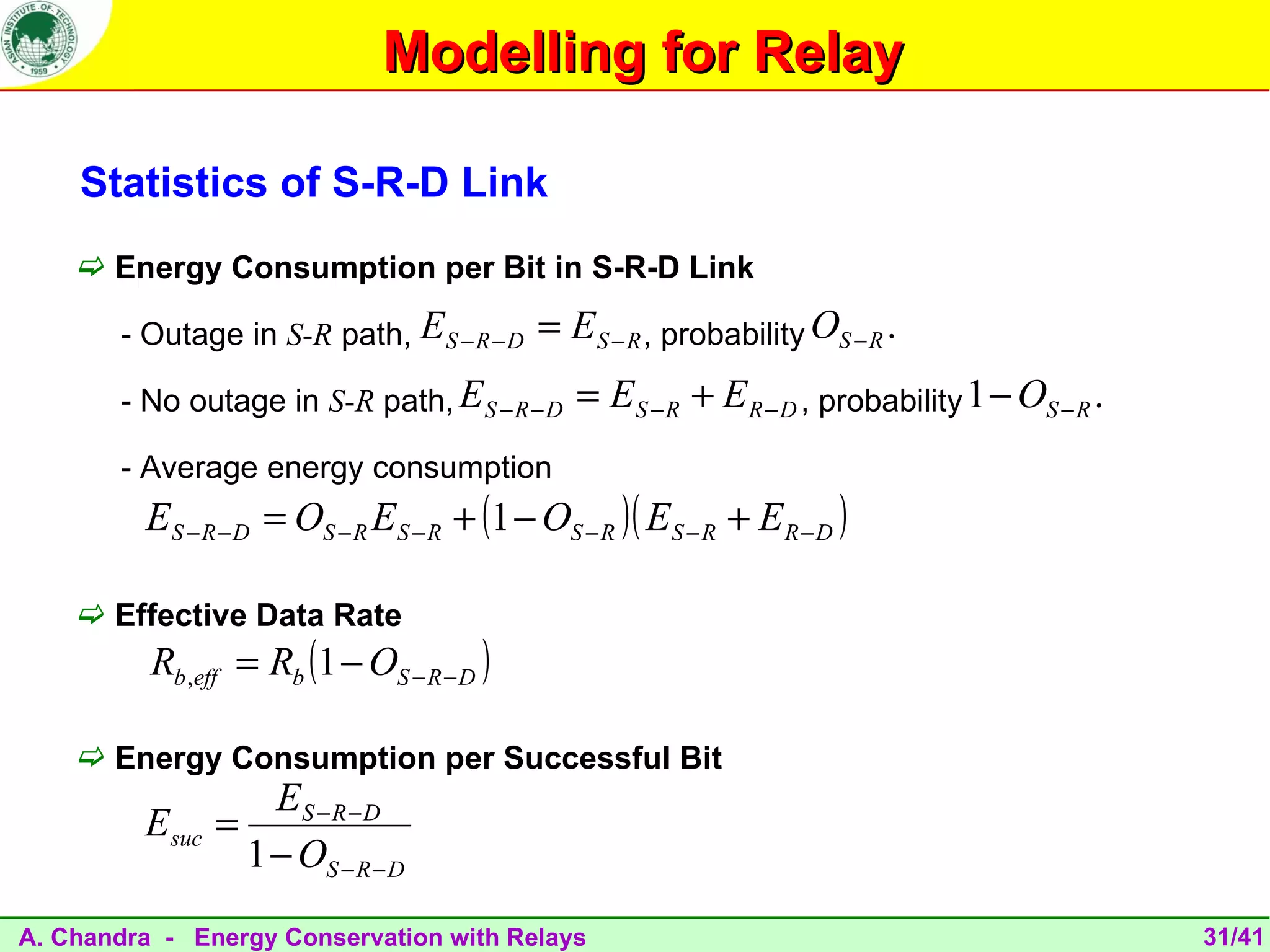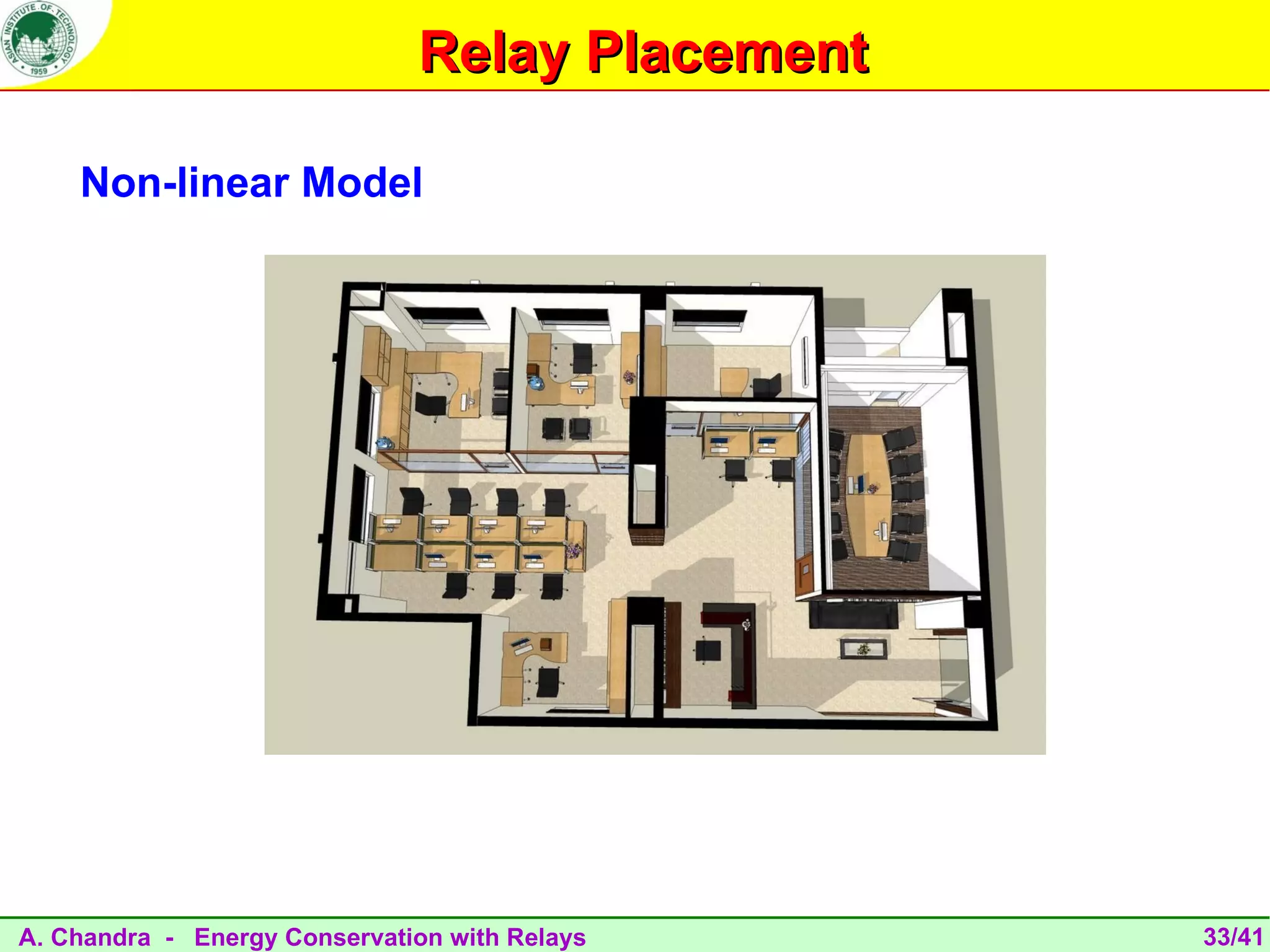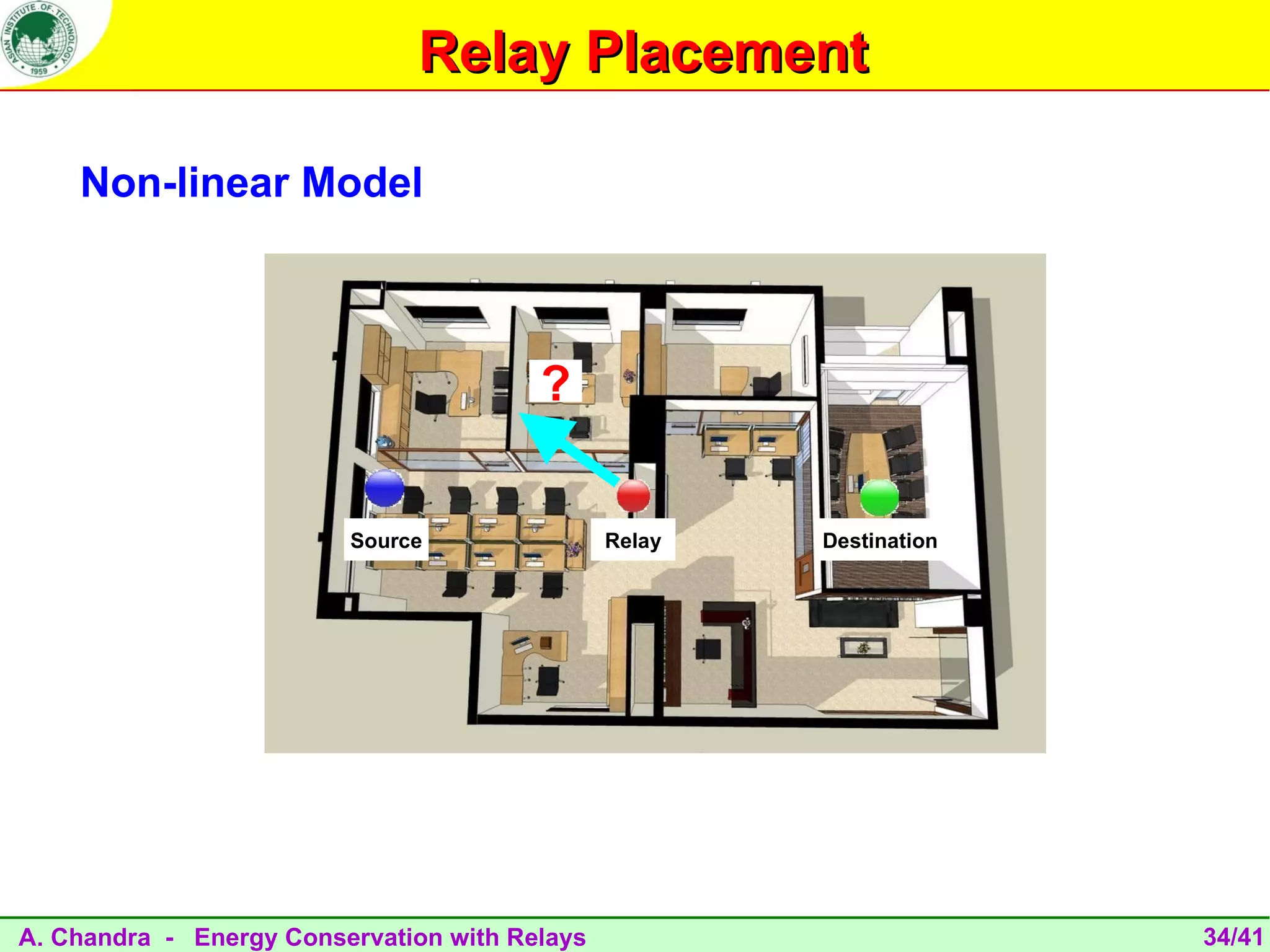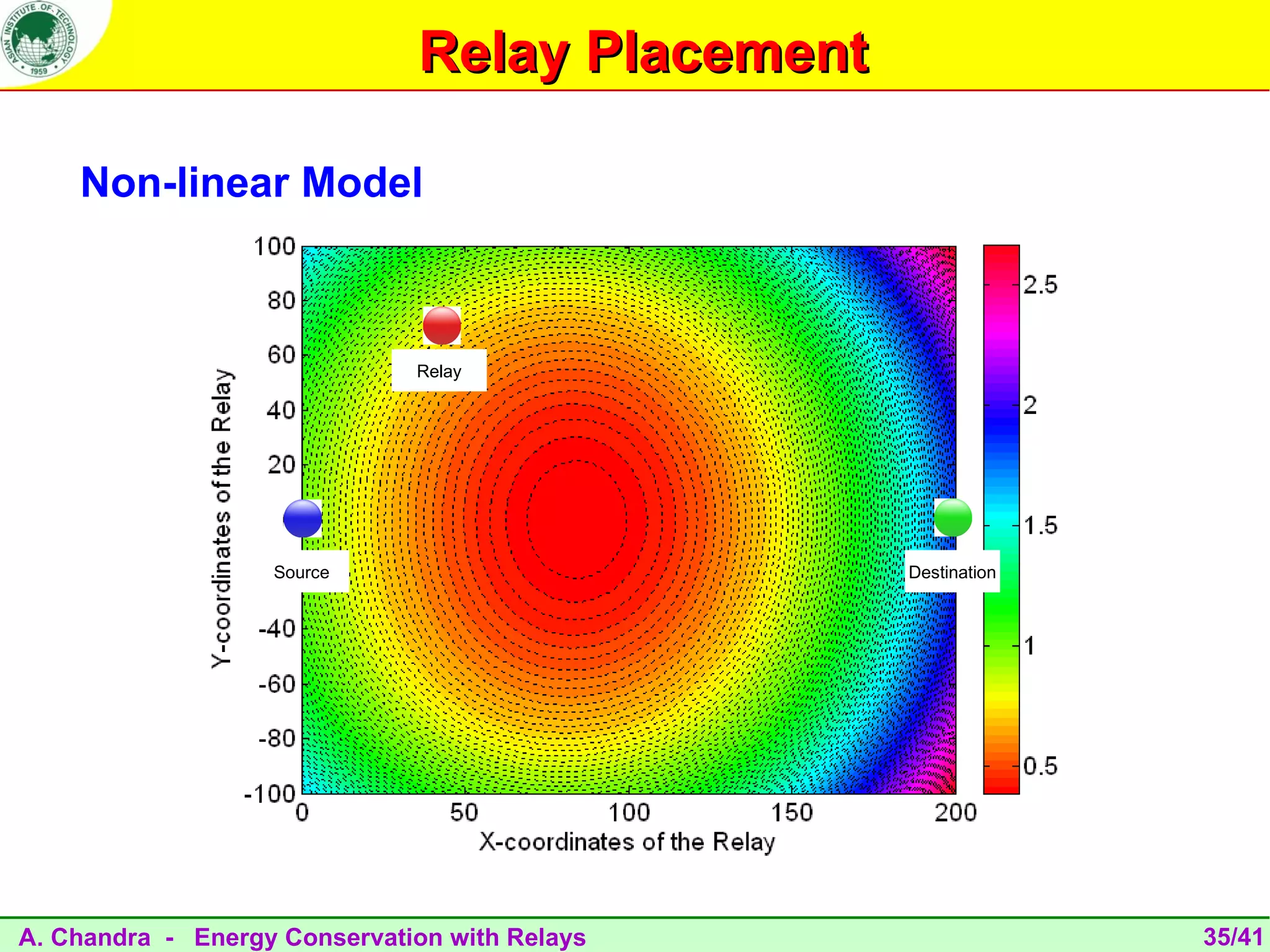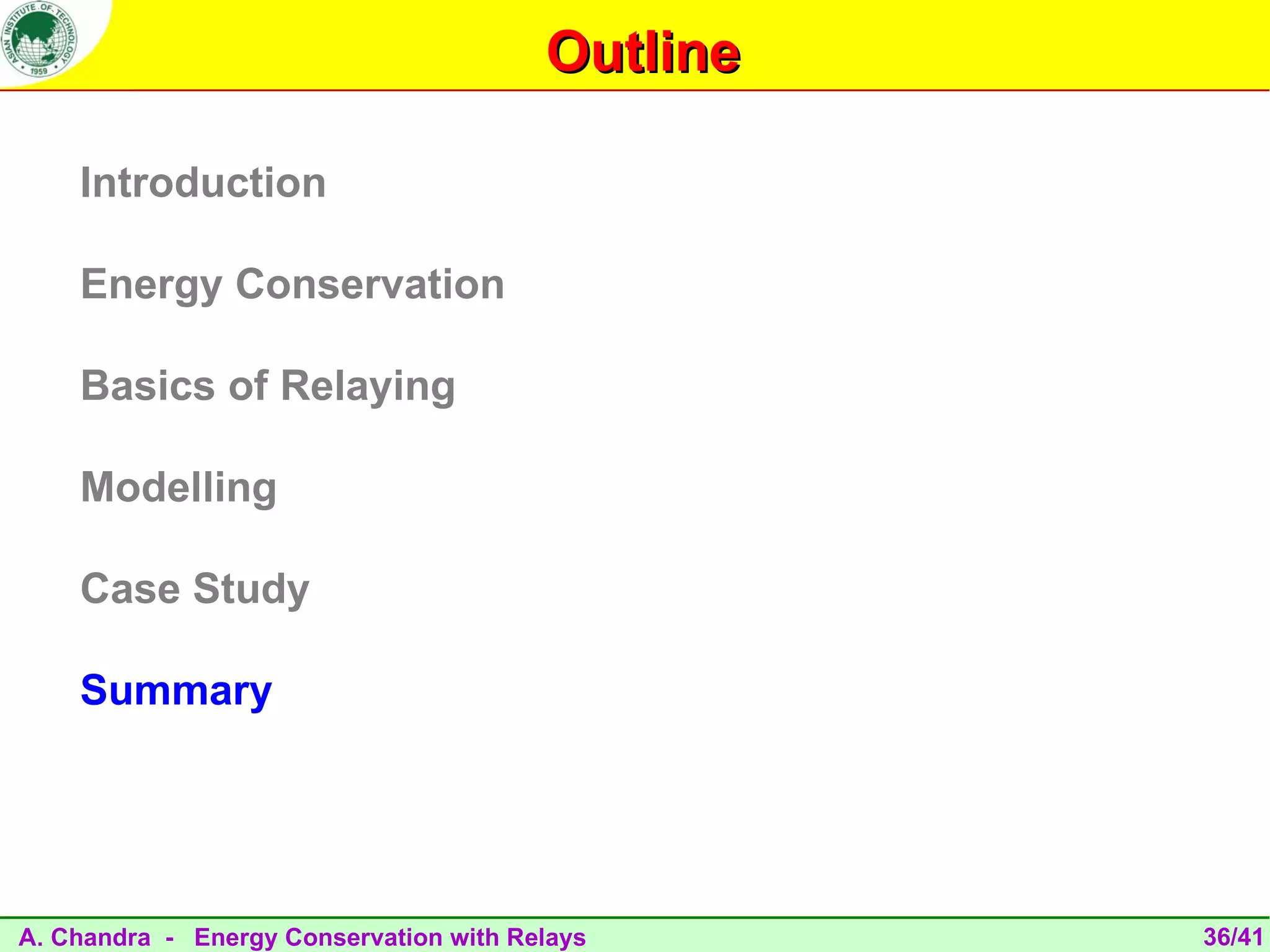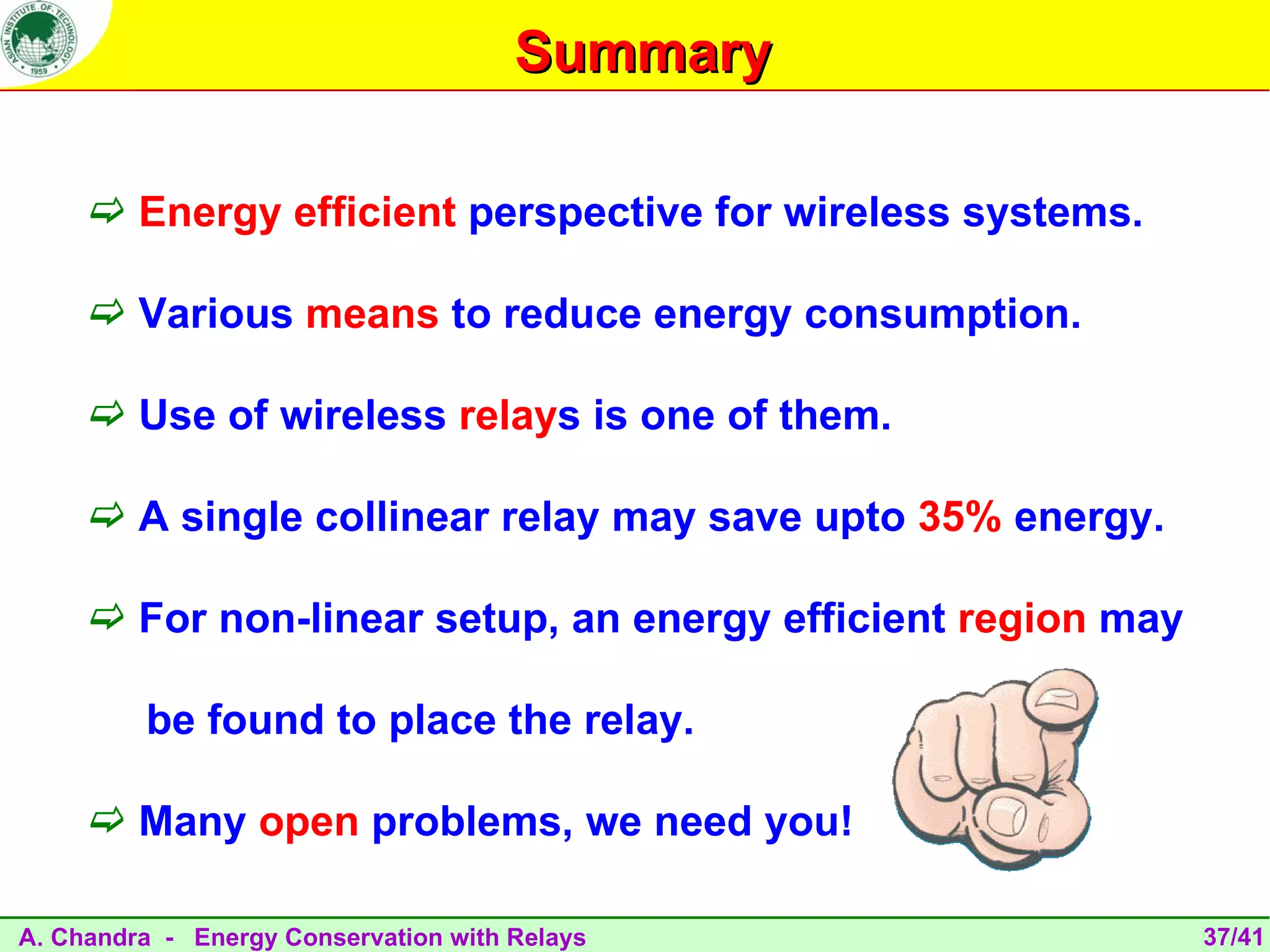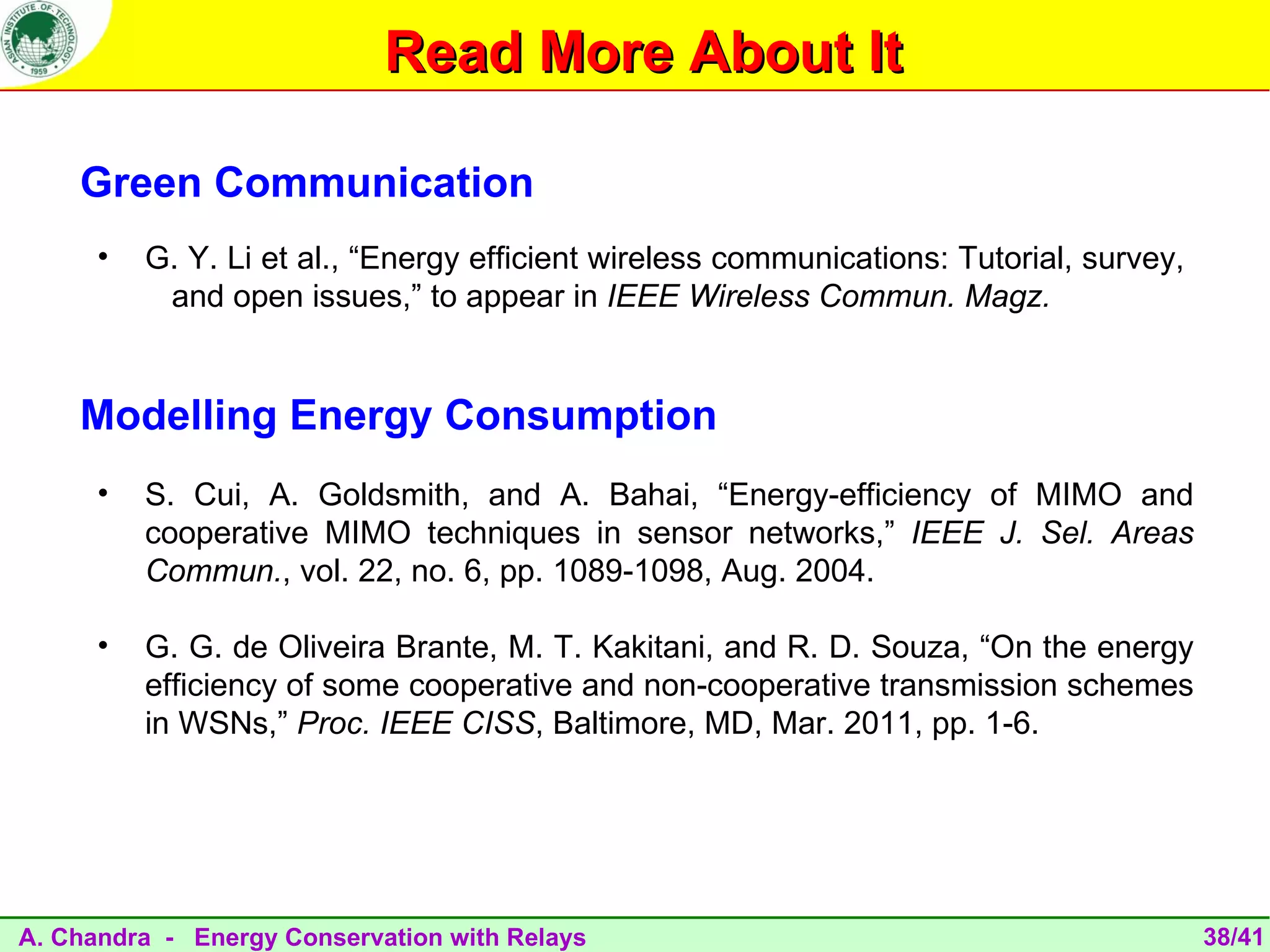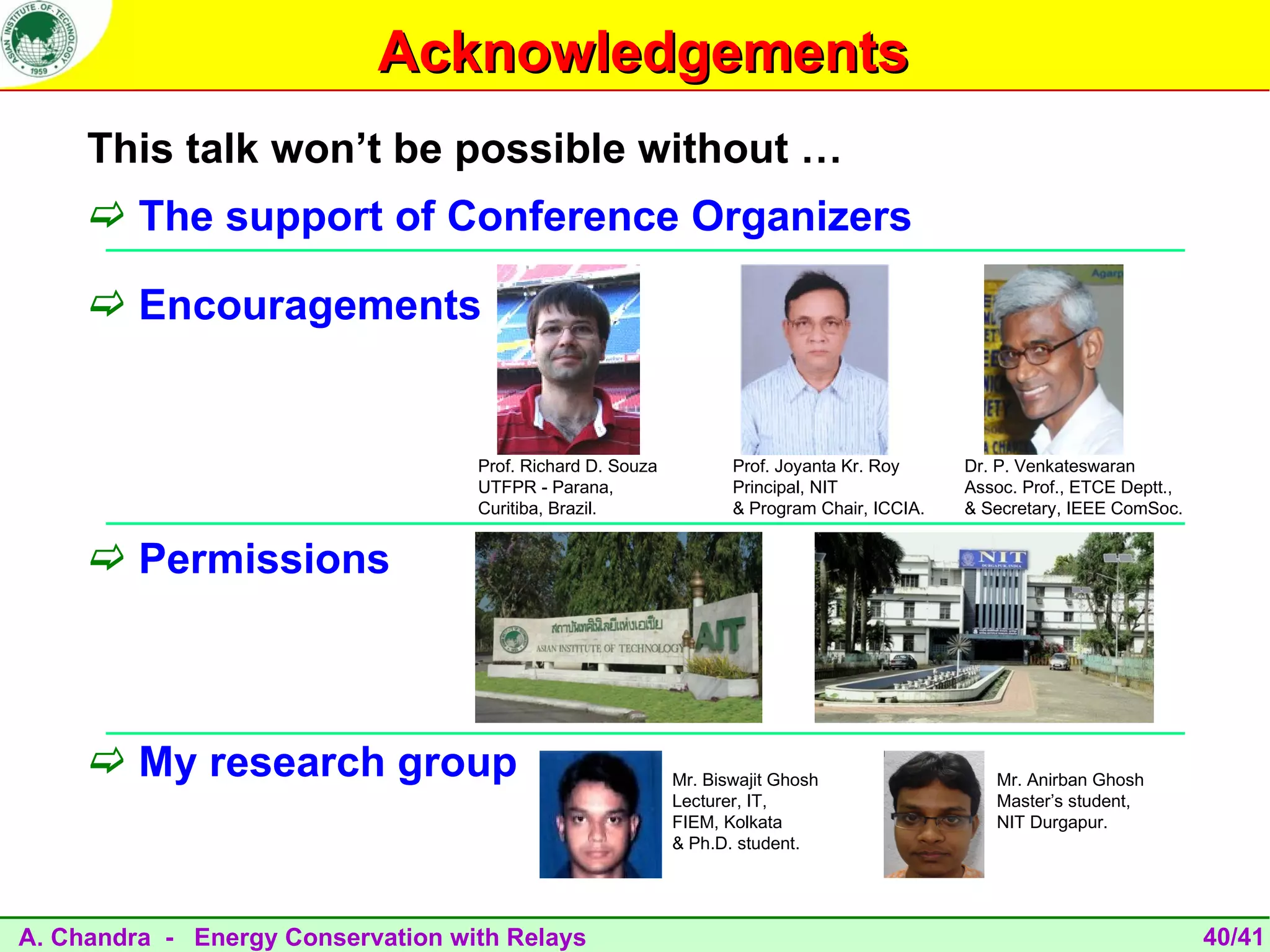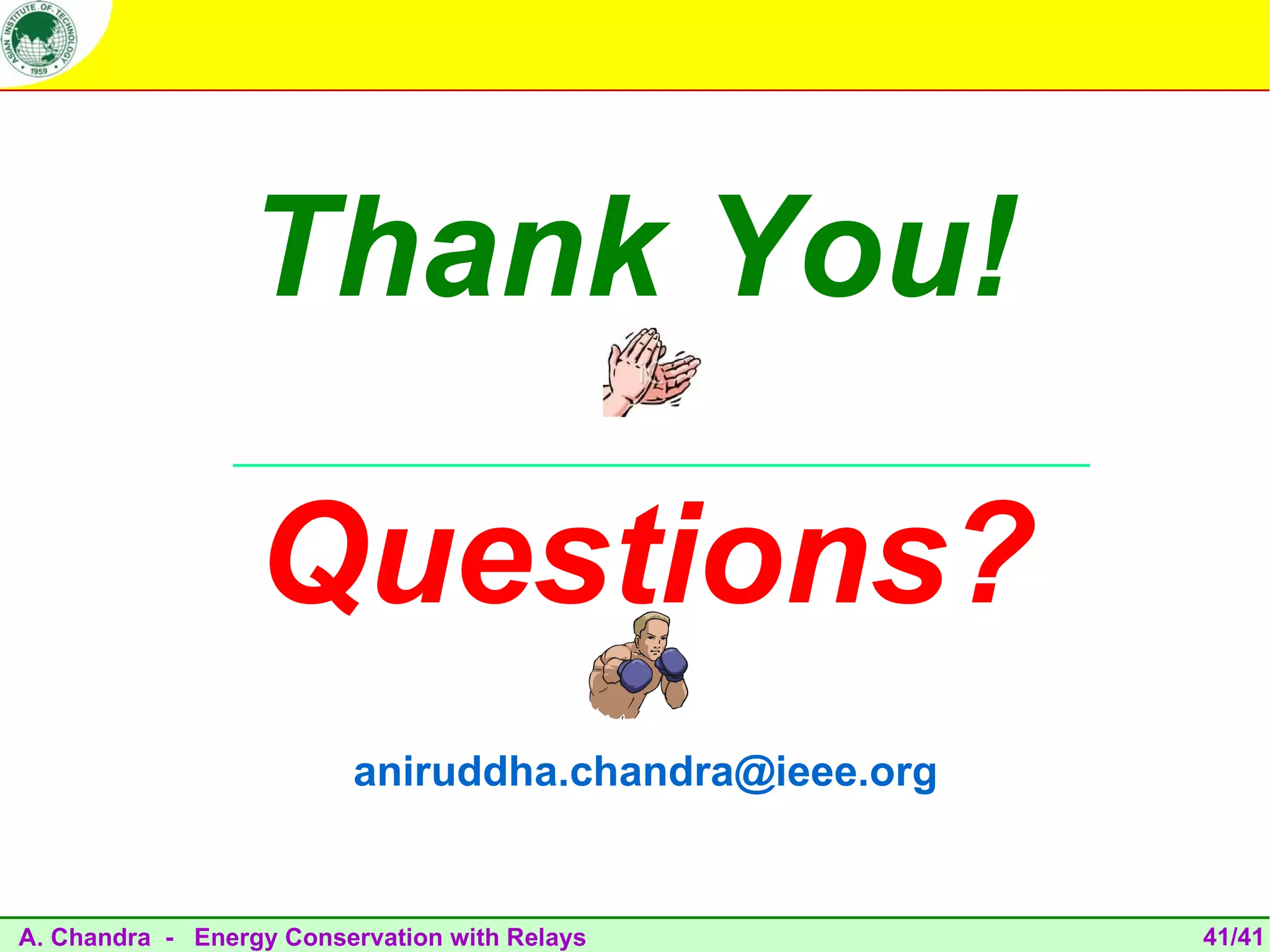The document discusses energy conservation in wireless communication systems using relays. It provides an introduction to the growing energy consumption of wireless networks and the need for more efficient designs. The basics of relaying are described, including what relays are, why they are used, and common relaying protocols. A framework for modeling energy consumption is also presented, including equations for power at transmit and receive, energy per bit, and the impact of fading. Research challenges in optimizing the use of relays are noted.
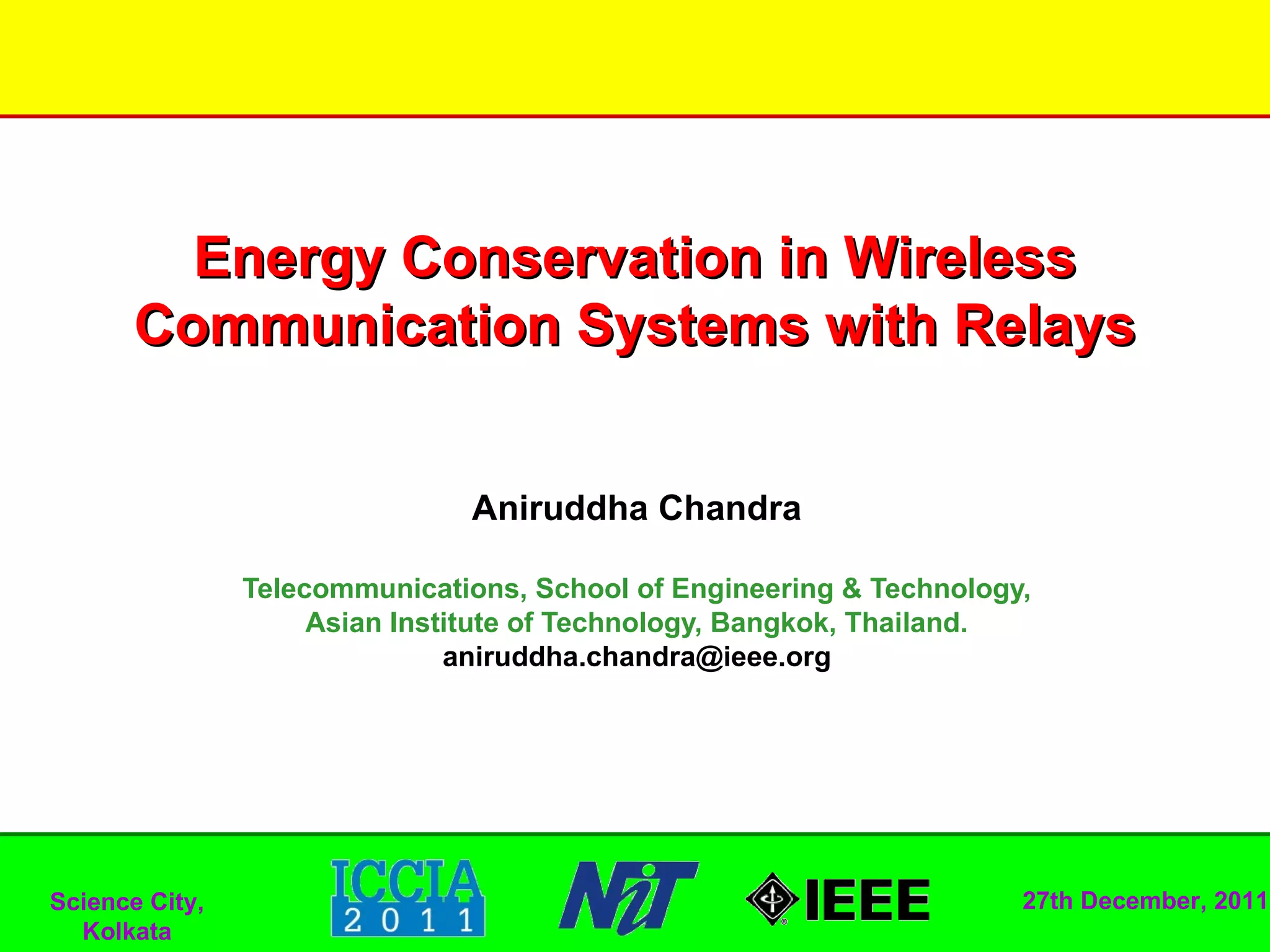
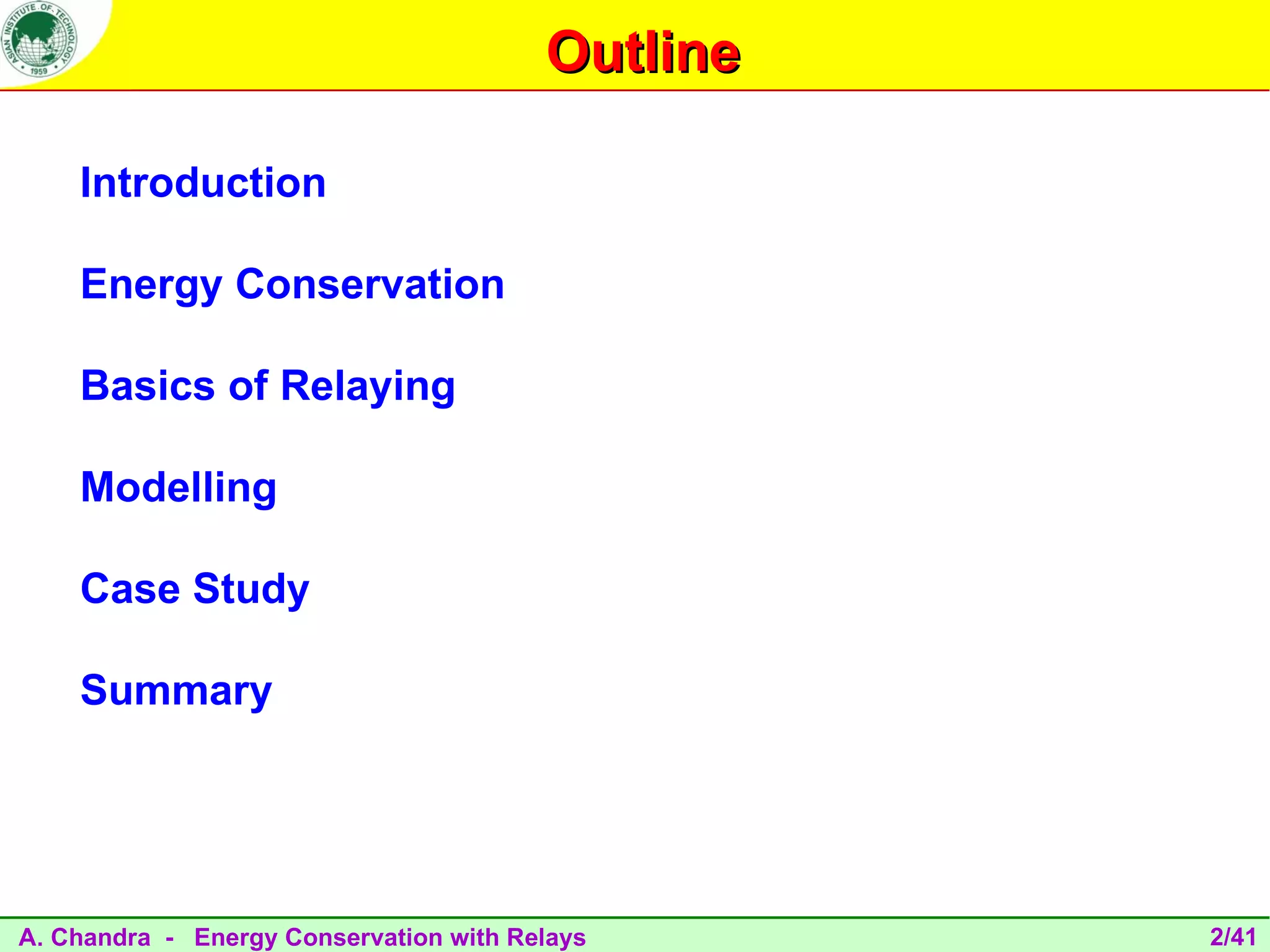
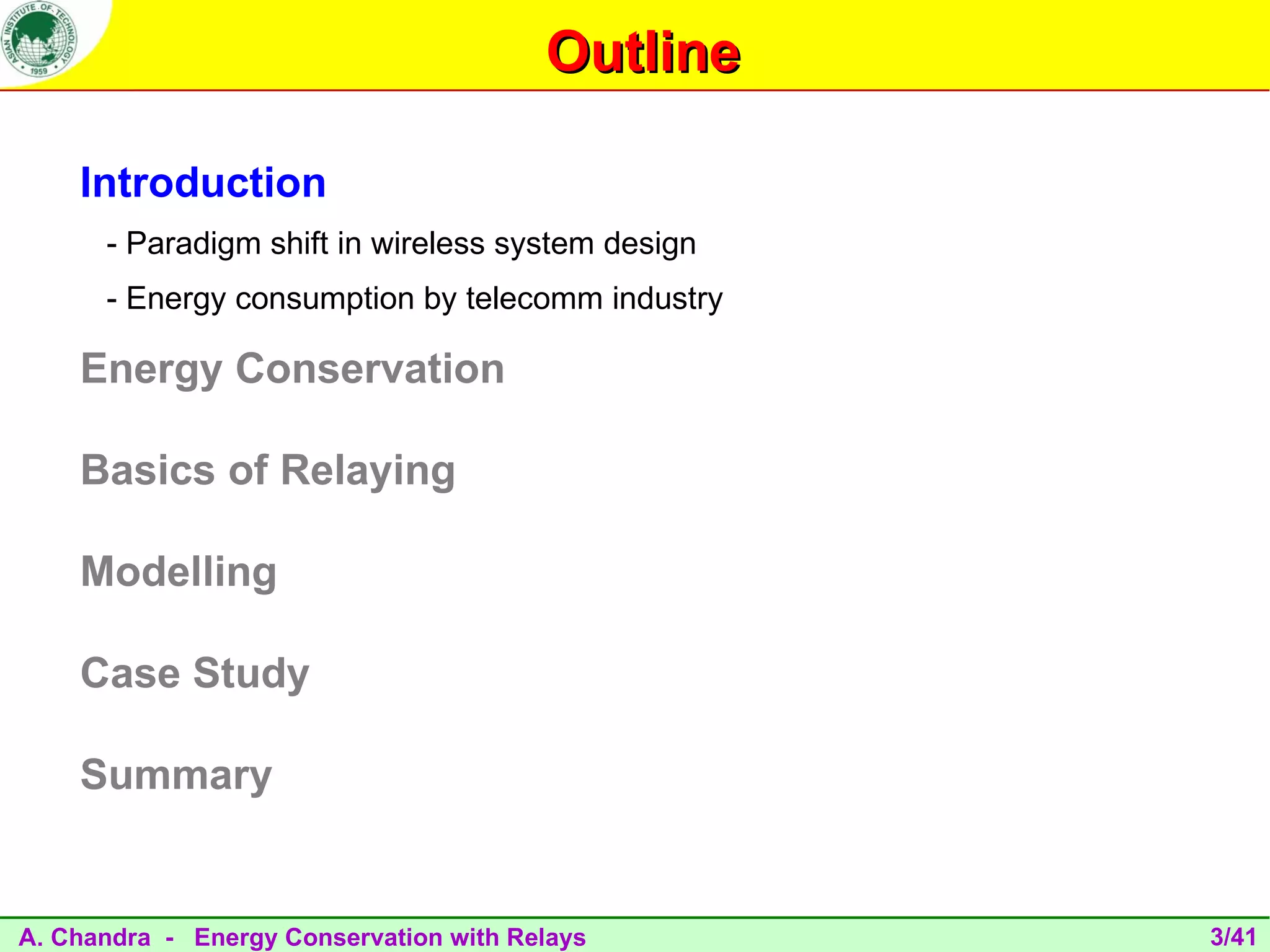
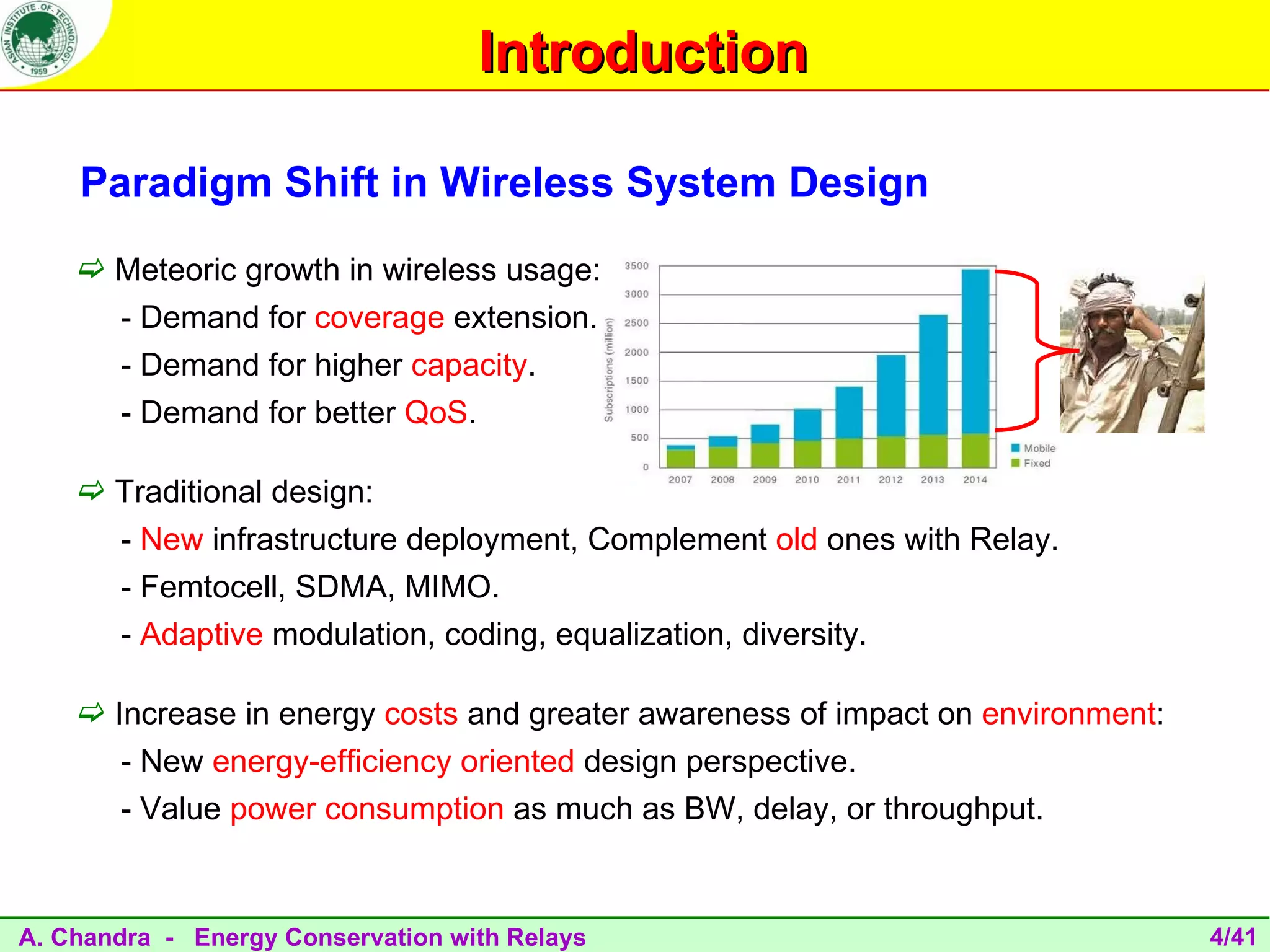
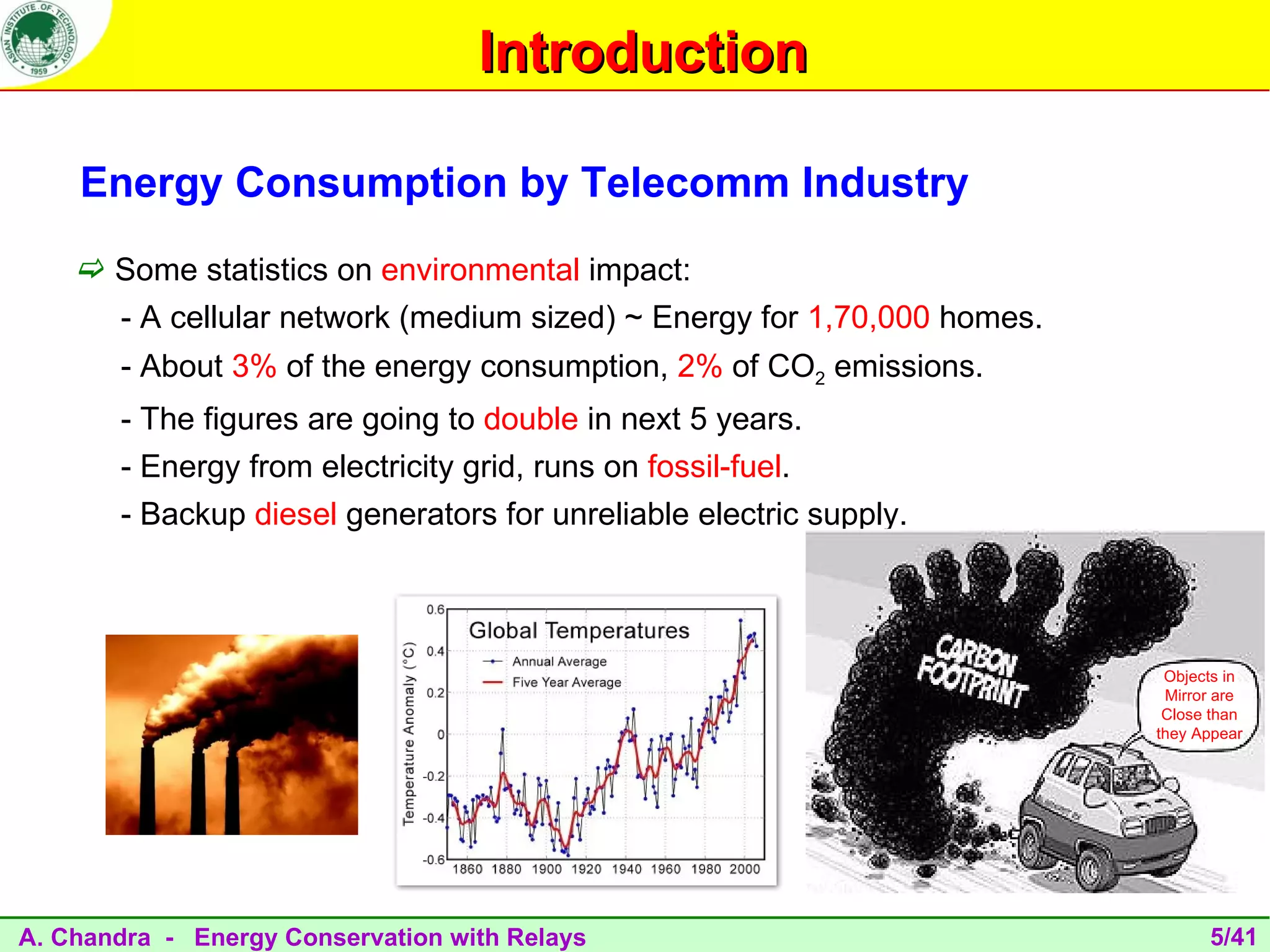

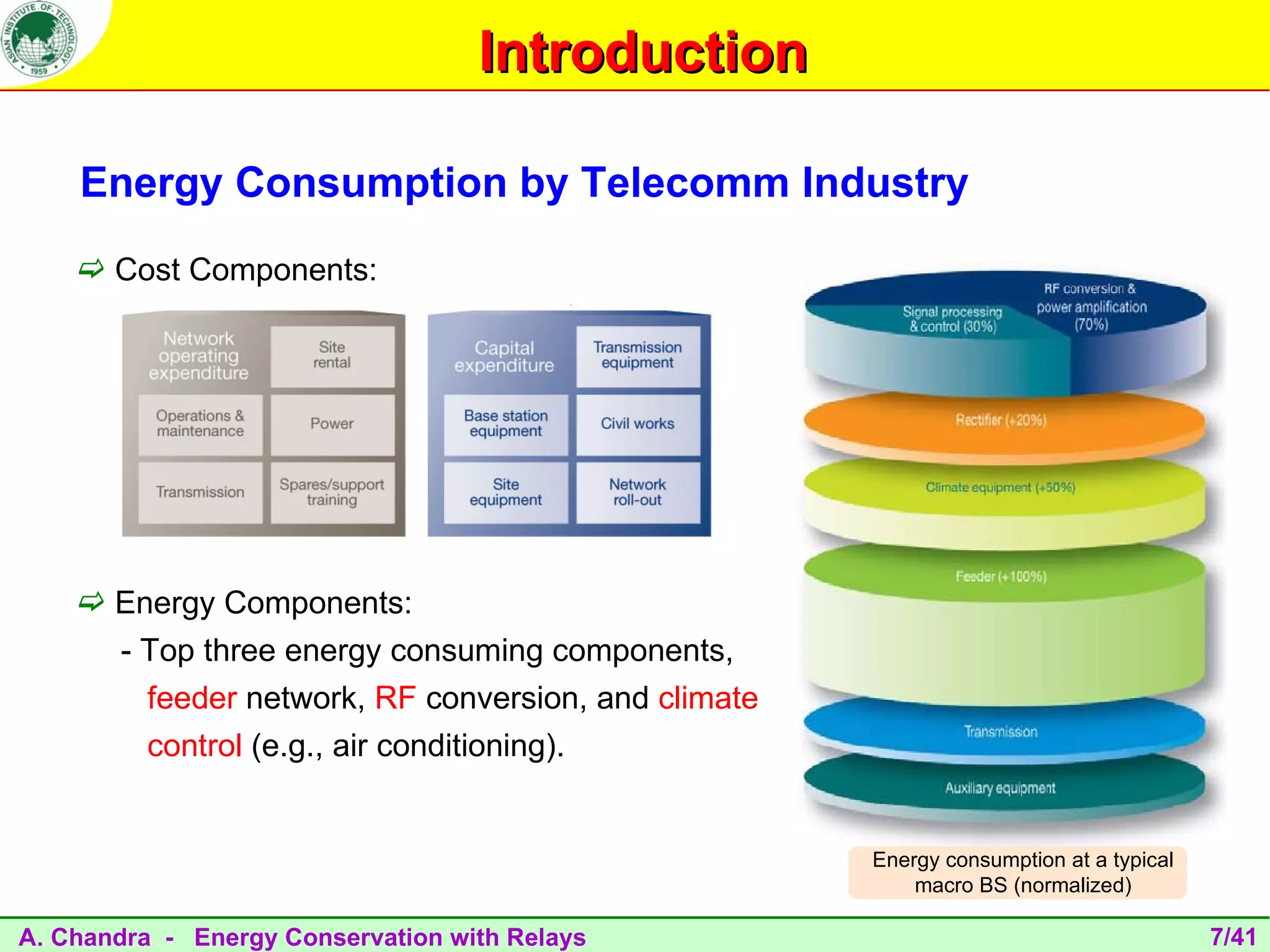

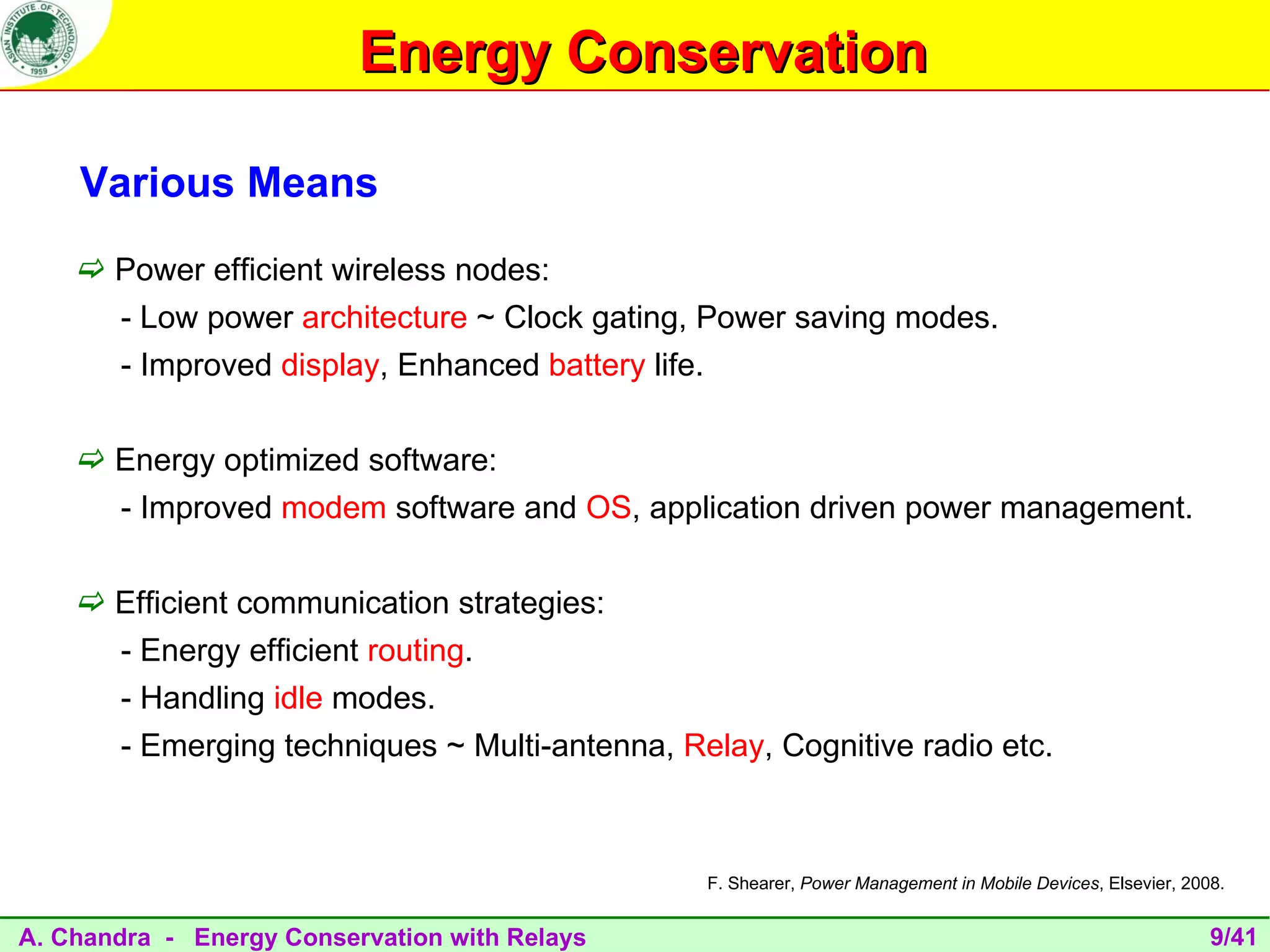
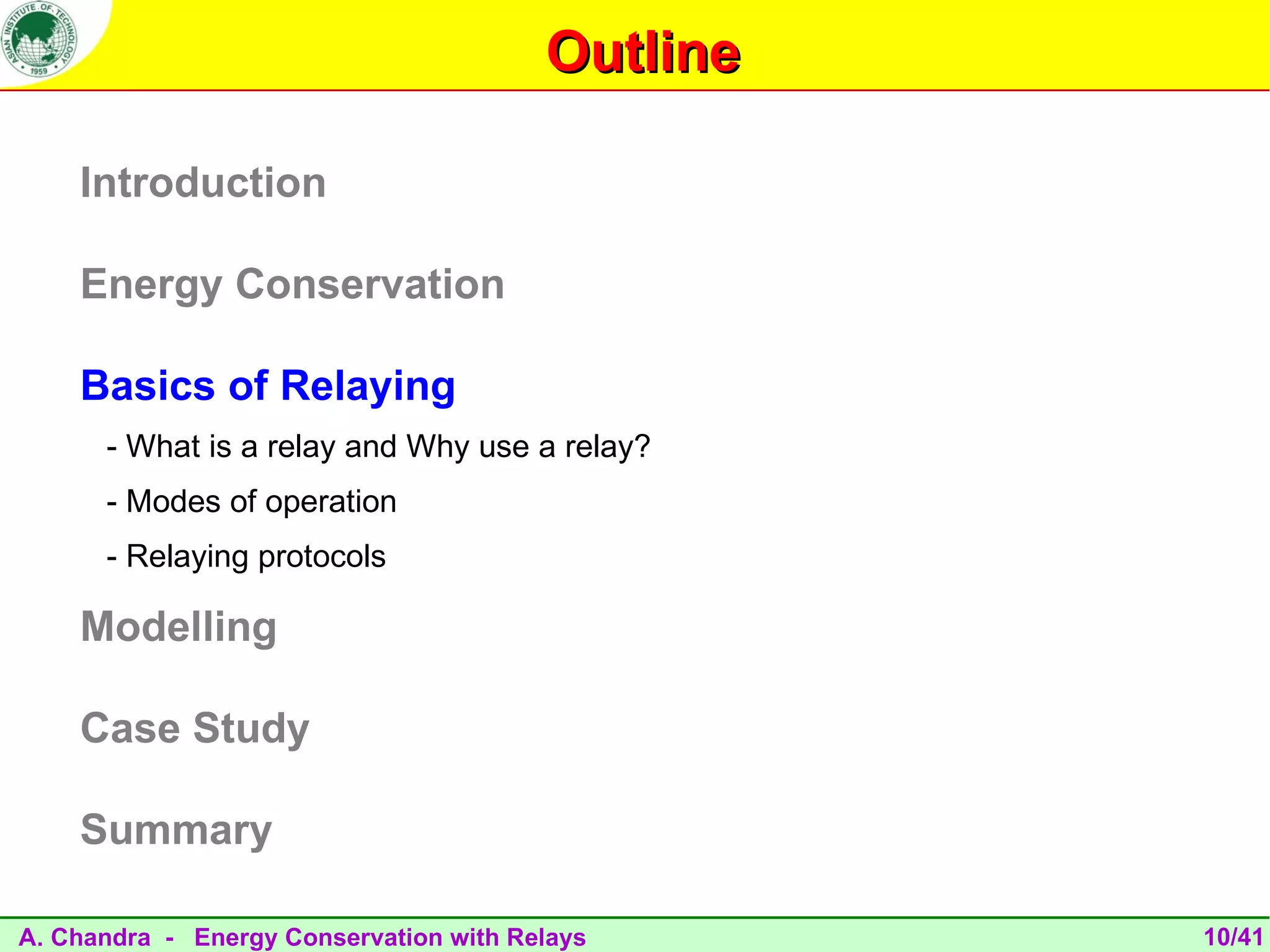

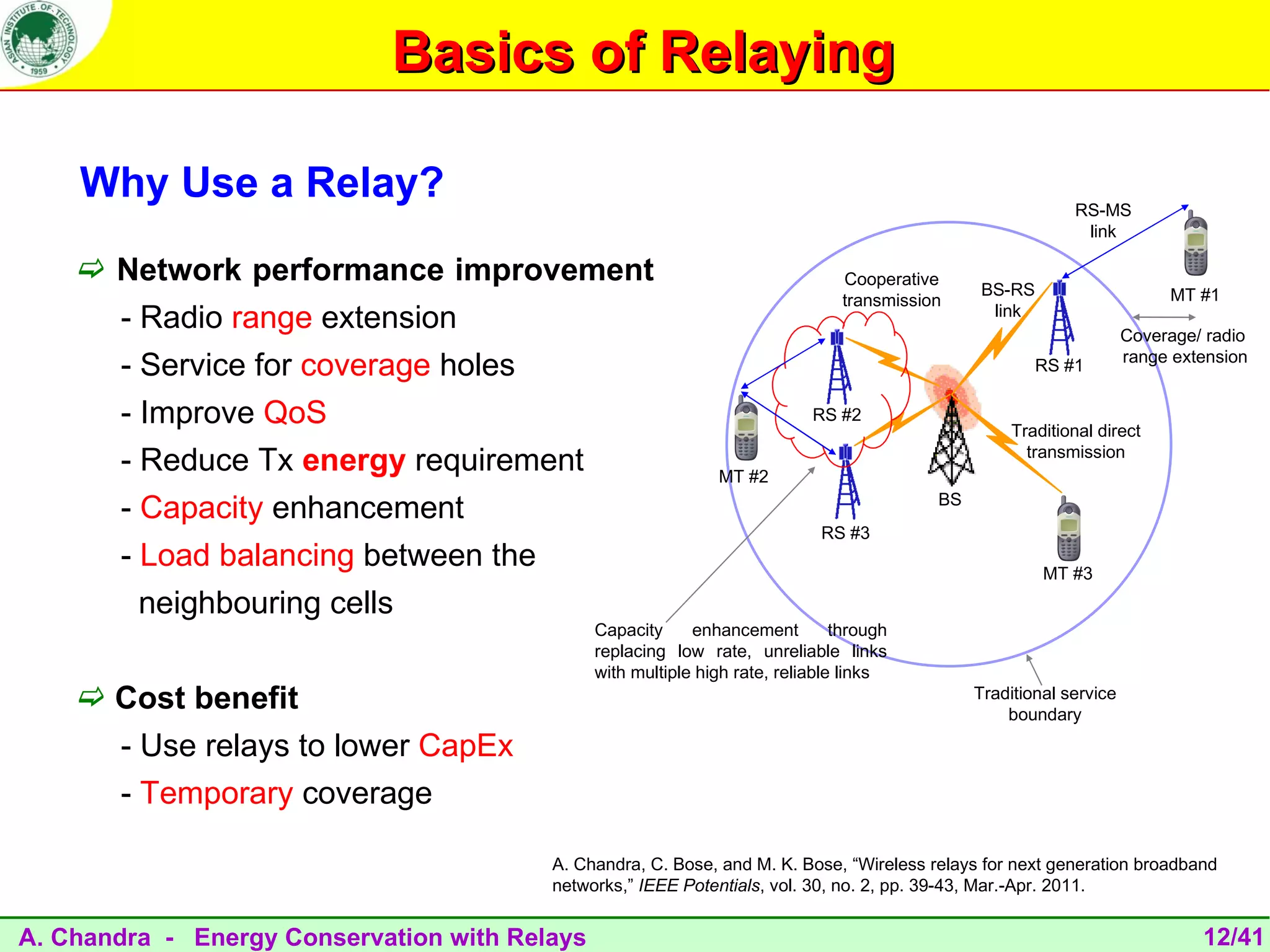
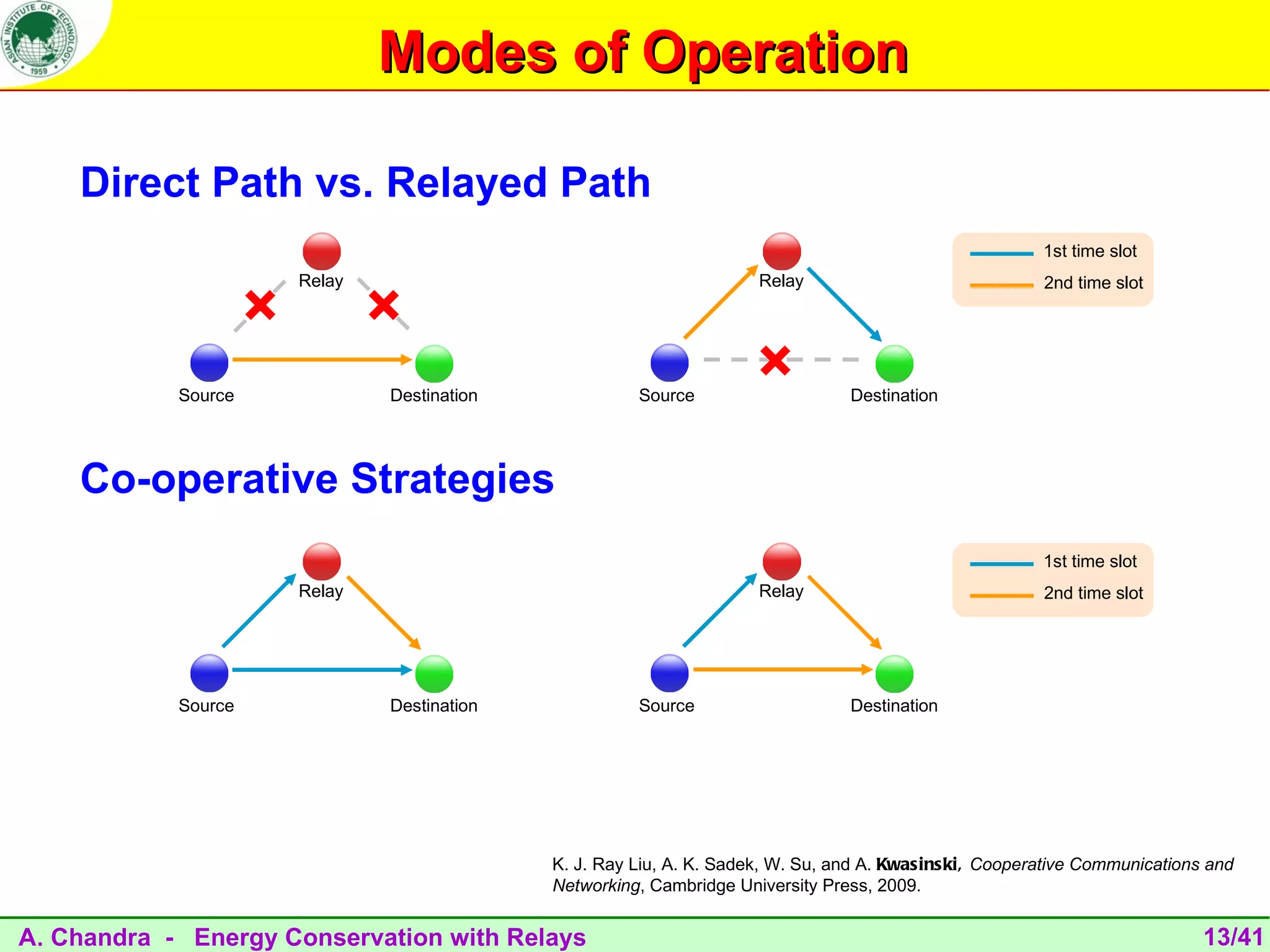

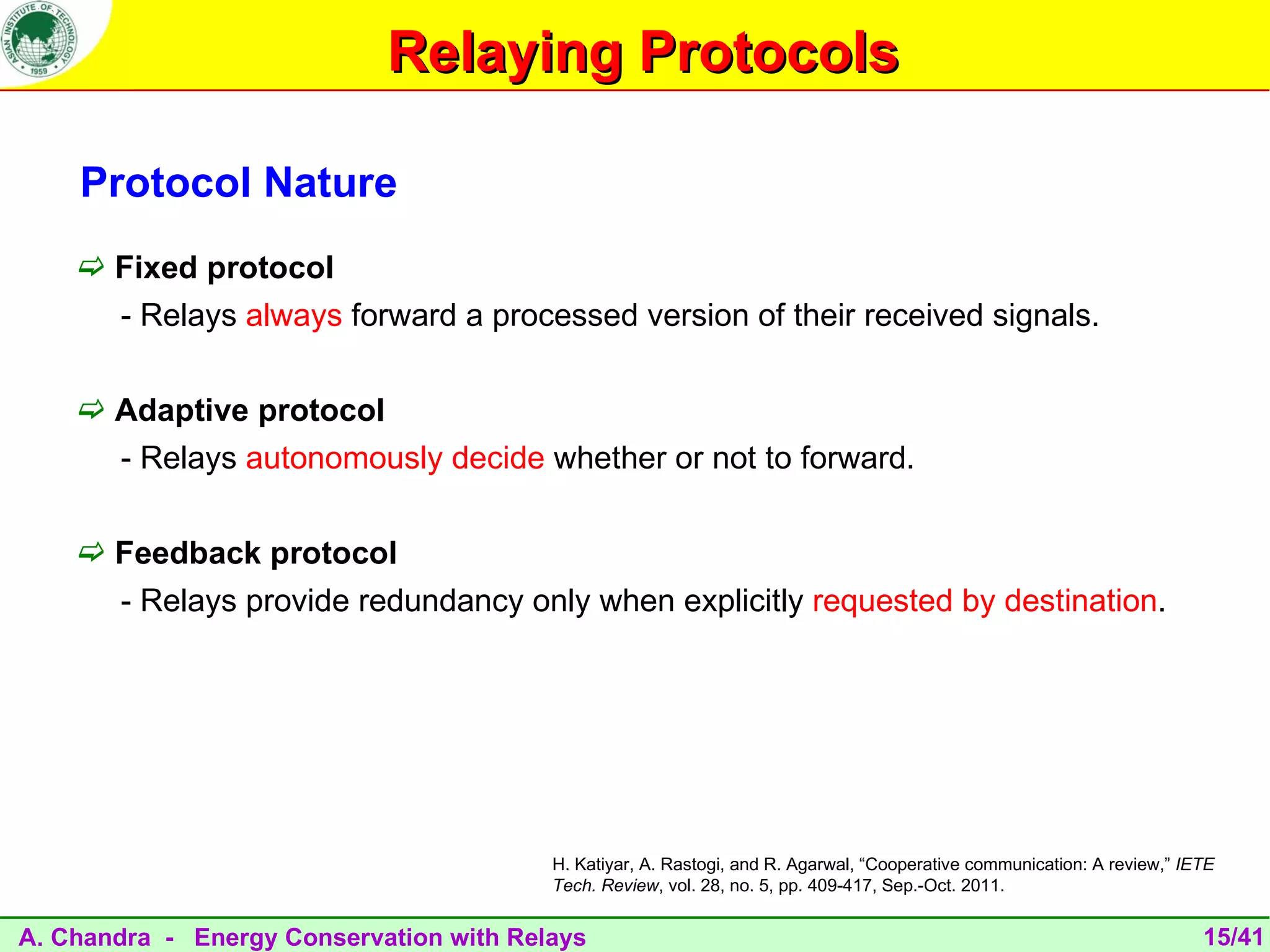
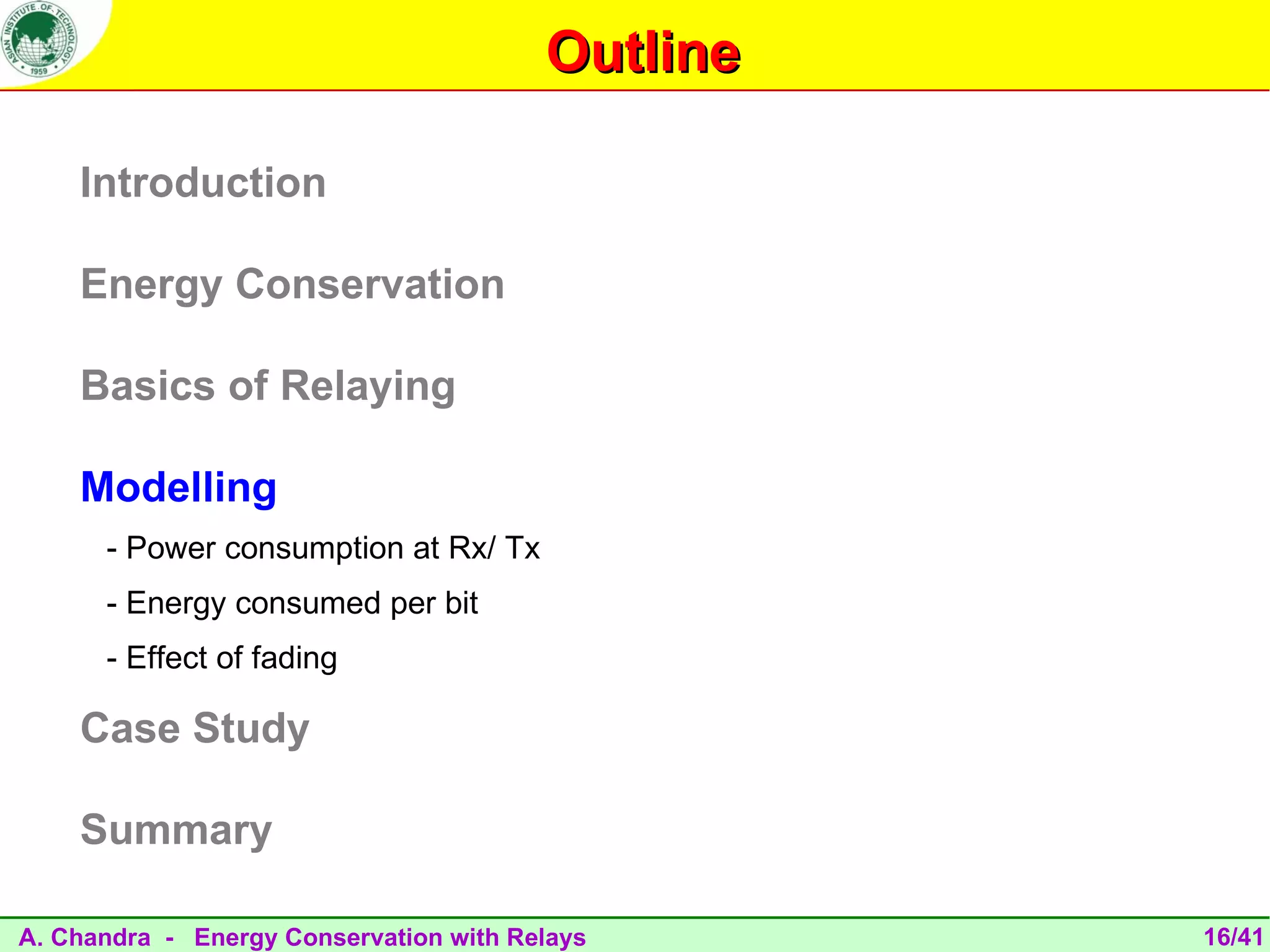
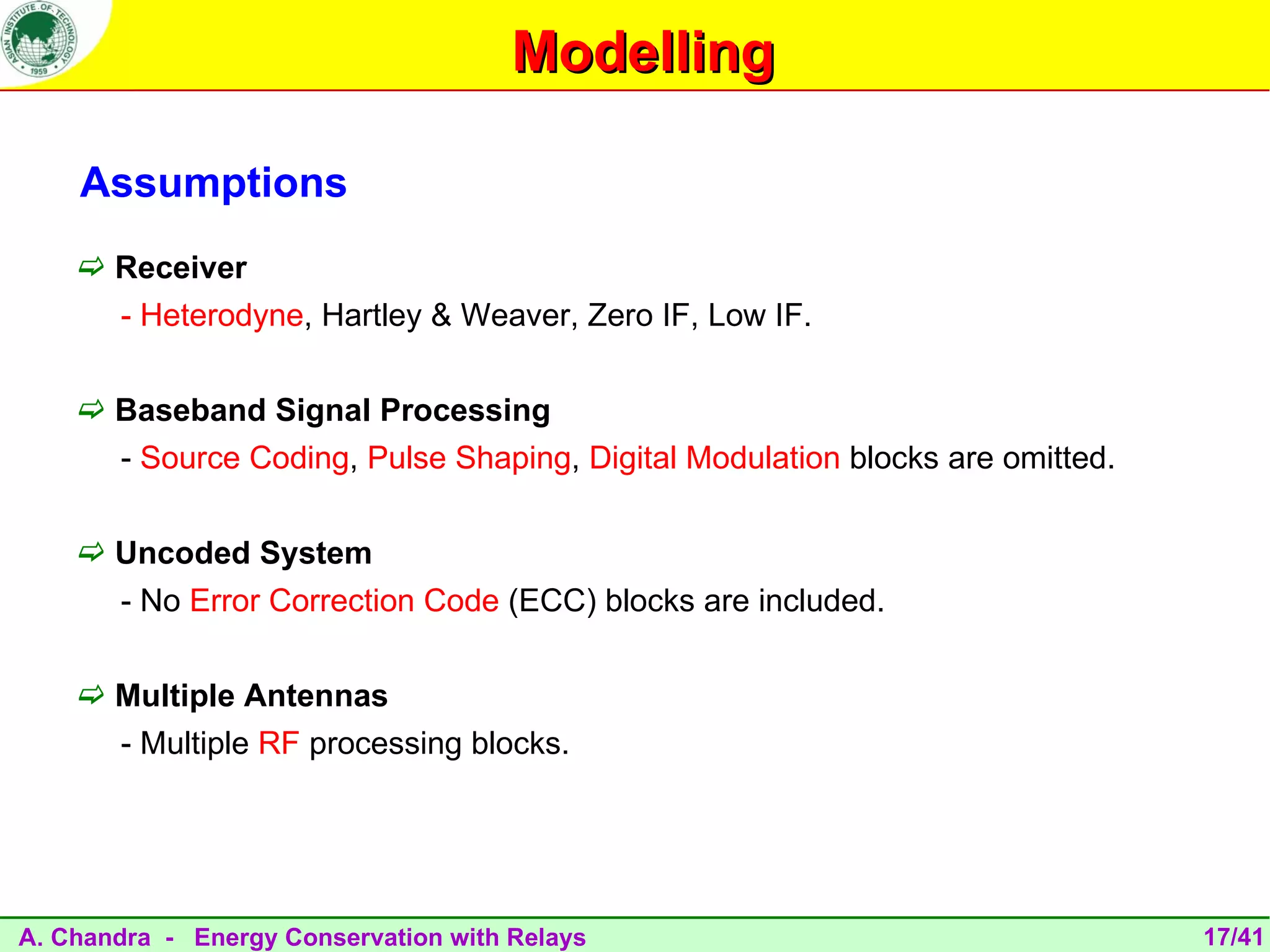
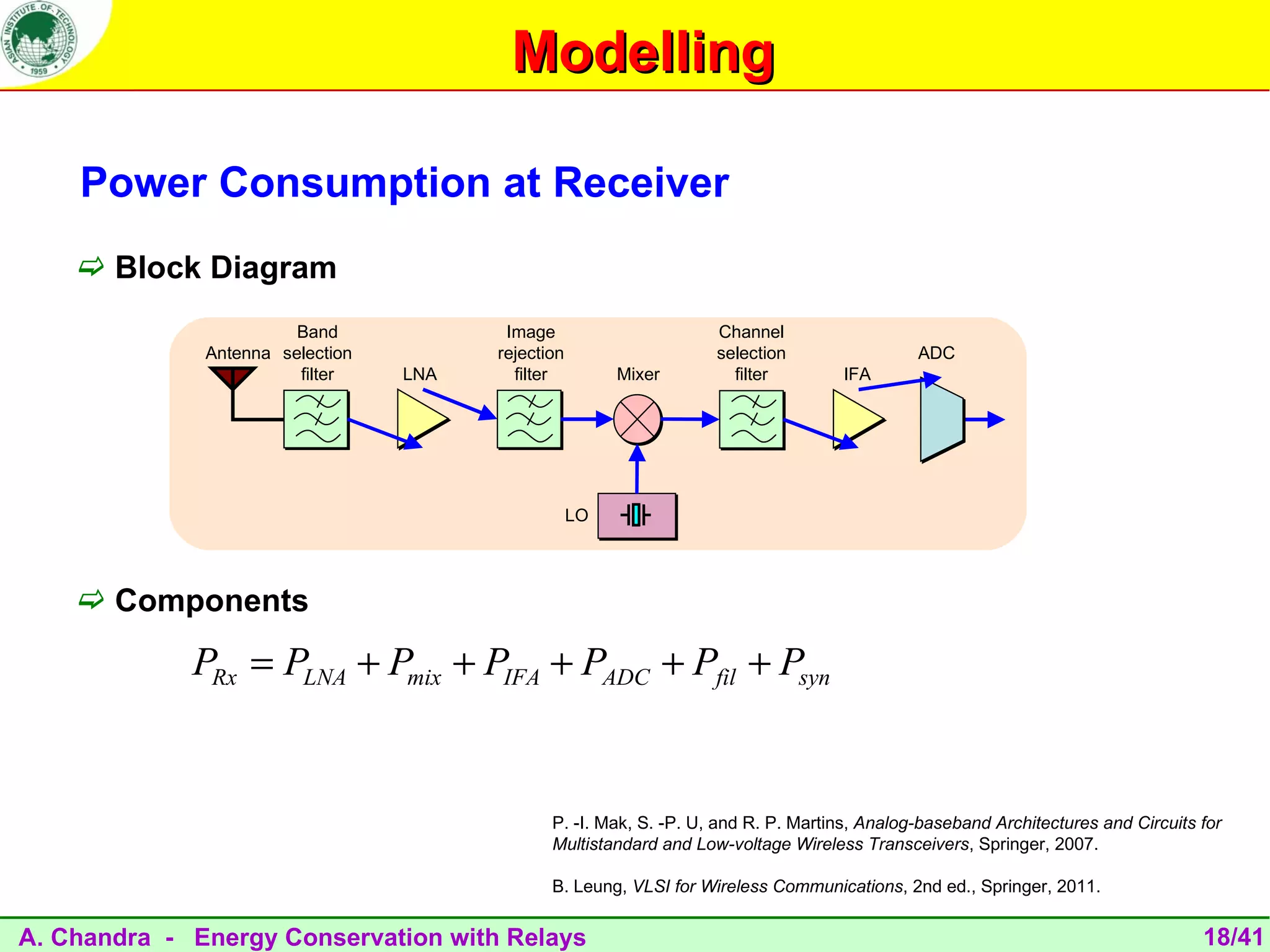

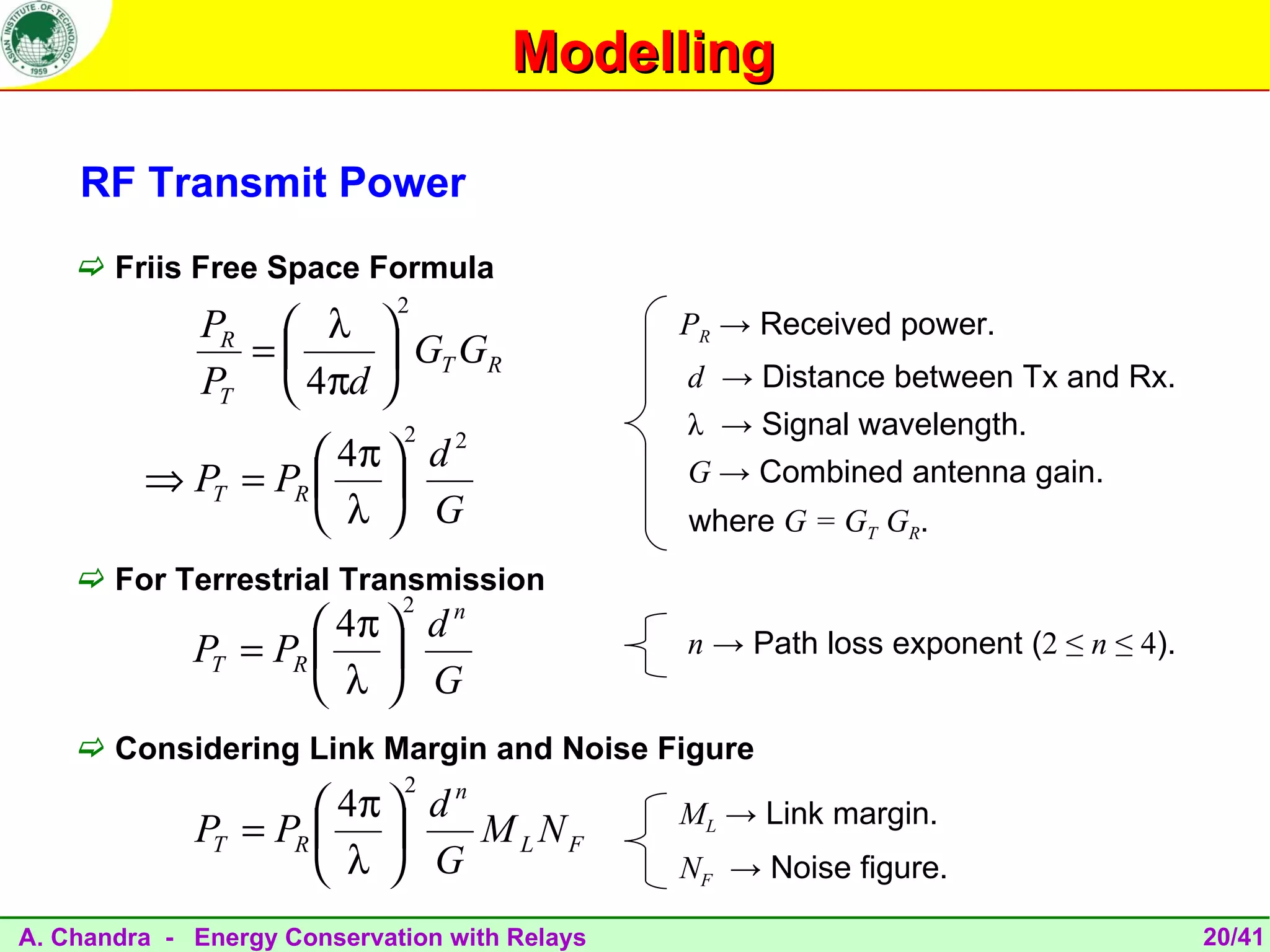

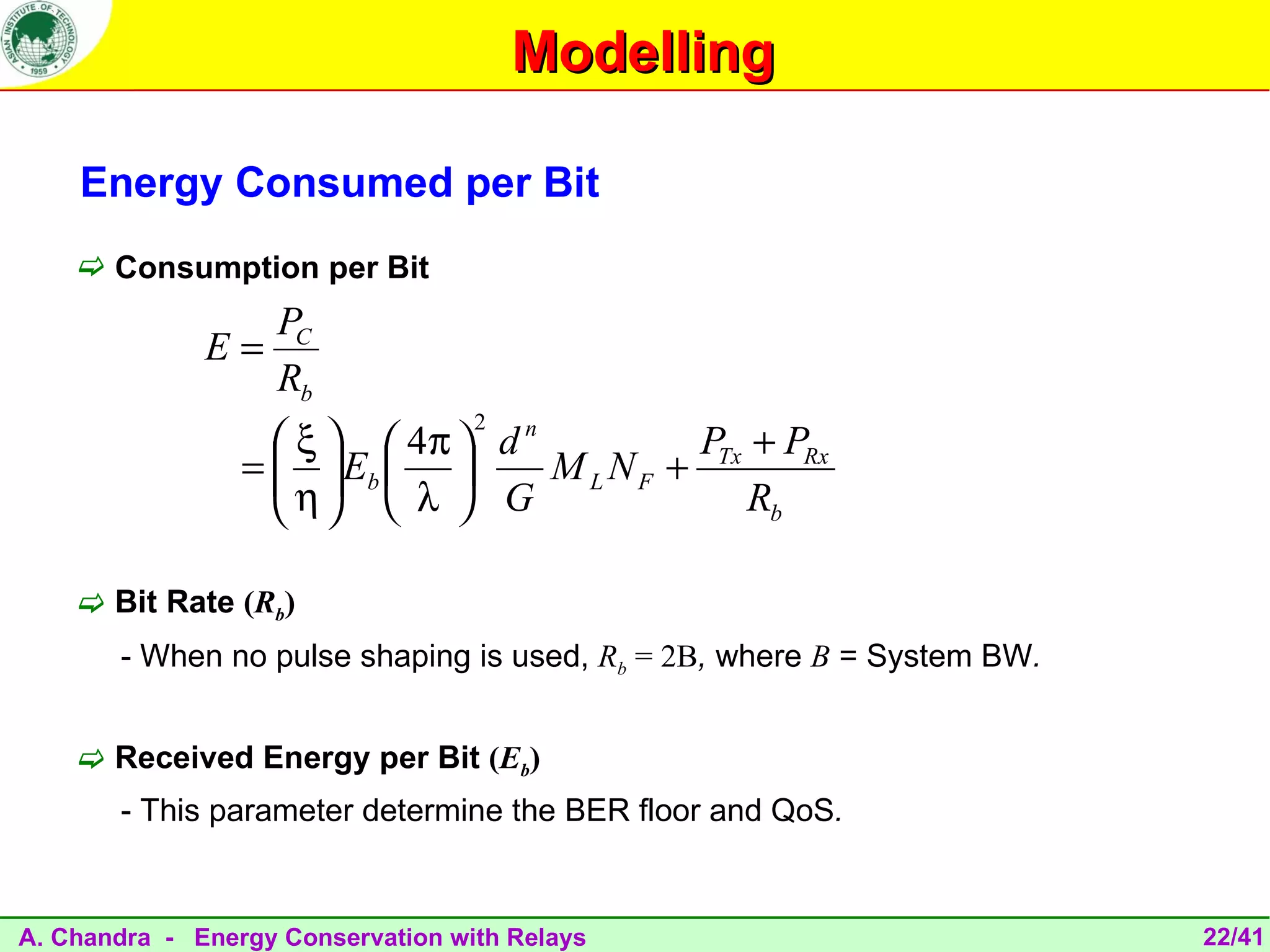
![Modelling
Ensuring a Fixed BER
Consider the Modulation Scheme
- For BPSK modulation, the BER is
1 Eb
Pe = erfc
N
2 0
Consider the Target BER
- Target BER is application specific, e.g. for voice applications, Pe ≤ 10-3.
Calculate Required Eb
1 Eb
erfc
N
≤ 10 −3
2 0
[
⇒ Eb ≥ N 0 erfc 2 ×10
-1
( −3
)] 2
A. Chandra - Energy Conservation with Relays 23/41](https://image.slidesharecdn.com/relaytalk-120624040228-phpapp02/75/Energy-conservation-in-wireless-communication-systems-with-relays-23-2048.jpg)
![Modelling
Effect of Fading
Statistics of Received SNR
- For Rayleigh fading
1 γ
f ( γ ) = exp −
γ
γ
Outage Probability
- For a target SNR (γo),
O = Pr[ γ < γ 0 ]
γ0
= ∫ f ( γ ) dγ
0
γ0
= 1 − exp −
γ
- Target SNR is determined by the required data rate.
A. Chandra - Energy Conservation with Relays 24/41](https://image.slidesharecdn.com/relaytalk-120624040228-phpapp02/75/Energy-conservation-in-wireless-communication-systems-with-relays-24-2048.jpg)
